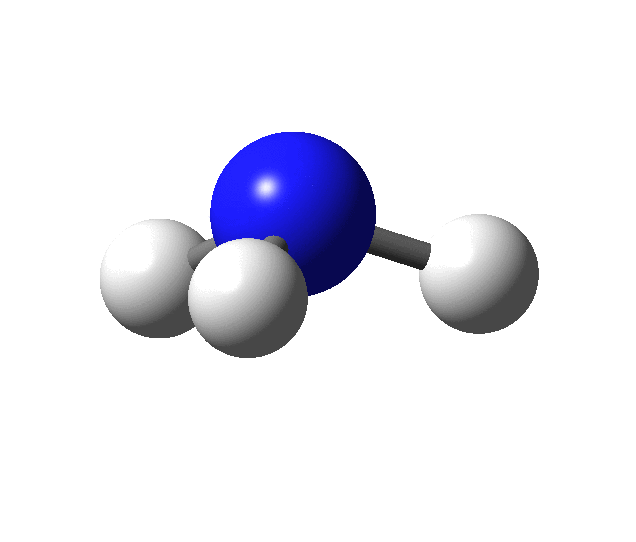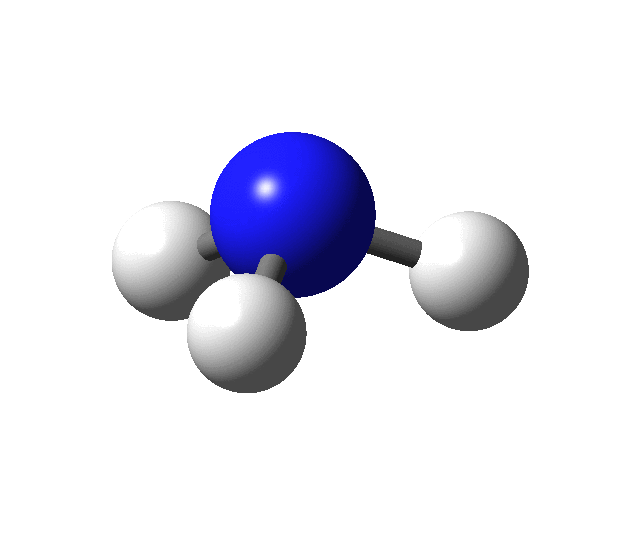Symmetry and Spectroscopy
The recommended texts for this course:
- Group Theory for Chemists, Kieran C. Molloy, Harwood Publishing, Chichester
- Molecular Quantum Mechanics PW Atkins and RS Friedman, Oxford University Press, Oxford
Suggested texts for extra information:
- Molecular Symmetry and Group Theory, Alan Vincent, John Wiley & Sons Ltd, Chichester
- Inorganic Spectroscopic Mehtods, Alan K. Brisdon, Oxford University Press, Oxford
- Molecular Spectroscopy, John M. Brown, Oxford University Press, Oxford
- Maths for Chemists, Martin Cockett and Graham Doggett, Royal Society of Chemistry
EXAMS!
- The format of the exam will be Part (a) a compulsory section of approximately 11-15 marks related to vibrational analysis/assignment and Part (b) a choice of two out of three questions covering other parts of the course (questions will be in range of 5-7 marks each)
- last years exam with outline answer and my feedback on where most people did well or poorly. This last part I write for you and it is well worth looking over
- you can also find older exams and outline answers on blackboard
- there are questions some with answers in both "Group Theory for Chemists" and "Molecular Symmetry and Group Theory"
- don't forget the in-class problems and "homework" questions from lectures.
Help:
need some help! e-mail me a question or to arrange a tutorial:Feedback:
Thank-you for filling out the questionnaires. It is a tremendous help to get specific and detailed feedback. A summary of your feedback and comments and my changes/thoughts in response for this year and last year can be found via the links below:Lecture 1 (updated for 2014)
- notes: pdf and character tables
- model anwers: pdf
- slides: pdf
- you need to be logged into Panopto for this to work: panopto link L1 unfortunately no sound!
- revise your symmetry notes from last year (MOs in Inorganic Chemistry) and look through these symmetry revision notes pdf
- revise your matrices from last year (Theoretical Methods course) and look through these matricies revision notes pdf
- resources related to this lecture optional
- imperial chemistry department symmetry web-site has 3D movable examples of symmetry elements for water
- Heisenberg developed matrix mechanics Wiki on Heisenberg and won the nobel prize in physics in 1932 for the creation of quantum mechanics
- Dirac noticed the connection between matrix mechanics and the Schrodinger's wave equation and put the two on an equal footing using matrices. Wiki on Dirac, Wiki on Schrodinger. Dirac and Schrodinger shared the nobel prize in physics in 1932 for the creation of quantum mechanics
Lectures 2 (updated for 2014)
- notes: pdf
- model anwers: pdf
- slides: pdf
- you need to be logged into Panopto for this to work: panopto link L2
- reading: optional
- Chapter 2: Groups and Representations, in "Group Theory for Chemists"
- Chapter sections 5.3-5.6 in "Molecular Quantum Mechanics"
- Programme 4: Matrices, in "Molecular Symmetry and Group Theory"
- extra material on the relationship between crystal and point group symmetries pdf
- extra material on transformation matrices for experts pdf
- web-links related to this lecture optional
Lecture 3 (updated for 2014)
- notes: pdf
- model anwers: pdf
- slides: pdf
- you need to be logged into Panopto for this to work: panopto link L3 unfortunately the mike was on mute for part of the lecture.
- resources related to this lecture optional
- Neils Abel
- multiplying and using matrices: Maths for Chemists, Chapter 4: Matrices and Matrix Algebra
- wiki on shperical harmonics
- Chapter 2: The Group Concept, in "Elements of Molecular Symmetry" by Yngve Ohrn, 54:519.4 OHR Level 2 Physical Sciences & Engineering. The later chapters are extremely technical, so only look at these if you are particularly keen!
Lecture 4 (updated for 2014)
- notes: pdf
- model anwers: pdf
- slides: pdf
- you need to be logged into Panopto for this to work: panopto link L4
- reading: optional
- Chapter 3: Reducible Representations, in "Group Theory for Chemists"
- Programme 4: Matrices, in "Molecular Symmetry and Group Theory"
- Symmetry labels pdf
- resources related to this lecture optional
- Clusters can have very high symmetry
- in 1996 the chemistry nobel prize was awarded for the discovery of a new form of carbon, the fullerenes. These are carbon clusters that can form very high symmetry structures, the prototypical fullerene is Buckminsterfullerene C60 which has the shape of a truncated-icosahedron.
- the icosahedron has iscosahedral symmetry, and 120 symmetry operations. It is an example of a platonic solid, or three dimensional polygon. Each polygon is associated with a symmetry group (a polyhedral group) that leaves the polyhedron invariant. The polyhedral groups are the tetrahedral, octahedral and icosahedral.
- IR spectroscopy is utilised by astronomers to learn more about the universe. Water vapour exists in space and on far planets, and IR light can travel from these distant places to be analysed near earth. Water in the atmosphere blocks key parts of the spectrum, so the IR spectrometers need to be very high in the atmosphere (airborne observatories) or orbiting the earth (space telescopes).
- SOFIA (Stratospheric Observatory for Infrared Astronomy) is a Boeing 747SP airliner modified to carry a telescope for IR observations at ~12 km in the stratosphere
- Kuiper is a highly modified C-141A jet transport aircraft operated by NASA to support research in infrared astronomy.
- Most of the optical telescopes launched into space (such as the Hubble Space Telescope) can also perform infrared observations. NASA's Spitzer Space Telescope is dedicated entirely to IR observations
- Recently water vapor has been detected inside a forming star system. Nature
- IR techniques have recently found water on hot gas giants with temperatures of 1000K, see related article1 and article2 from NASA's web-site.
- Why is Water Blue?

- Water absorbs in the red part of the visible spectrum and thus light which pass through and which is reflected from several meters of water appears blue. The red absorptions are due to high overtone and combination states of the vibrational spectrum of water which is shifted by the presence of H-bonding and just penetrates the red end of the visible spectrum. Deuterated water is colourless because the isotope effect is sufficient to shift this vibrational band out of the visible spectrum.
- sourced from here and published in: J. Chem. Edu., 1993, 70(8), 612
- Clusters can have very high symmetry
Lecture 5 (updated for 2014)
- notes: pdf
- model anwers: pdf
- slides: pdf
- you need to be logged into Panopto for this to work: panopto link L5
- reading: optional
- Molecular Quantum Mechanics: Appendix 19: Normal modes: an example
- Programme 7: Applications to Molecular Vibration, in "Molecular Symmetry and Group Theory"
- Programme 8: Linear Combinations, in "Molecular Symmetry and Group Theory" by Alan Vincent
- resources related to this lecture
- last years notes on The Great Orthogonality Theorem, removed from the course, but worth looking at if you want to know where the Reduction formula and Projection Operator come from! pdf optional
- below are animations of the A1 out-of-plane bending (umbrella) and stretching modes of NH3


Lecture 6 (updated for 2014)
- notes: pdf. Please note there is a correction to your notes on p11 the dipole moment symmetries are B1,B2 and A1. This has been corrected in the pdf file above.
- model anwers: pdf
- slides: pdf
- you need to be logged into Panopto for this to work: panopto link L6
- reading optional
- Molecular Spectroscopy, John M. Brown, Oxford University Press, Oxford. This is one of the Oxford University primers, so it is a small compact and excellently writen booklet. highly recommended
- From "Molecular Quantum Mechanics", by Peter Atkins and Ronald Friedman.
- Chapter 6.17: The Einstein transition probabilities
- Appendix 16: Electric dipole transitions
- Chapter 10: Molecular Rotations and Vibrations.
- Appendix 8 and 9: The radial and angular wavefunctions
- Appendix 7: The harmonic oscillator: the standard solution
- In Chapter 2: The harmonic oscillator
- in Chapter 11: Molecular electronic transitons
- Section 5.16: Vanishing integrals
- Section 5.15: Direct product groups
- resources related to this lecture
- extra notes: extending the description of determining non-zero integrals to degenerate functions, a bit more on where the Einstein coefficients come from, a brief description of the rotational nuclear functions in the total wavefunction (and how to write the dipole moment in angular coordinates), a bit more on the electronic wavefunction including the Laguerre polynomicals and a fuller account of Raman spectroscopy to combine with the material in the lecture notes. pdf
- wiki on Hermite polynomials
- wiki on Laguerre polynomials
Lecture 7 (updated for 2014)
- notes: pdf. Please note there is a correction to your notes on p3 the single excitation (1b2)1(2b1)1 results in a direct product set of B2,B1 and A2 which does not contain A1 and so is not allowed. And a modification to your notes on p4 where the initial state vibrational function is now assumed to be A1g only. These changes have been corrected in the pdf file above.
- model anwers: pdf
- slides: pdf
- you need to be logged into Panopto for this to work: panopto link L7
- reading optional
- From "Molecular Quantum Mechanics", by Peter Atkins and Ronald Friedman.
- Chapter 10.16: The effects of anharmonicity
- in Chapter 11: Vibronic transitions
- in Chapter 6: Techniques of approximation sections 6.1-6.4
- a little extra for those interested in term symbols for molecules: Chapter 7.16-7.18 Term symbols and transitions of many-electron atoms, through to Alternative coupling schemes advanced!
- From "Molecular Quantum Mechanics", by Peter Atkins and Ronald Friedman.
Lecture 8 (updated for 2014)
- notes: pdf
- there are no slides for this lecture, the derivation was done on the whiteboard!
- you need to be logged into Panopto for this to work: panopto link L8
- reading optional
- From "Molecular Quantum Mechanics", by Peter Atkins and Ronald Friedman.
- those who wish to look at time-dependent perturbation theory can complete Chapter 6 advanced!
- the Oxford University Press website has student resources from the text, they plot out the solutions to some of the perturbation equations, I'll leave you to play around with the worksheets
- additional resources for information on inorganic chemistry examples and theory
- Infrared and Raman spectra of inorganic and coordination compounds, reprinted 1995, by Kazuo Nakamoto, both Part A, Theory and applications in inorganic chemistry and Part B, Applications in coordination, organometallic, and bioinorganic chemistry. 543.422.4 NAK Level 2 Physical Sciences & Engineering
- Chapter 5: Vibrational Spectroscopy, in "Structural Methods in Inorganic Chemistry", 2nd ed. by E. Ebsworth, D Rankin, and S Cradock. 543.42 EBS Level 2 Physical Sciences & Engineering
- From "Molecular Quantum Mechanics", by Peter Atkins and Ronald Friedman.
